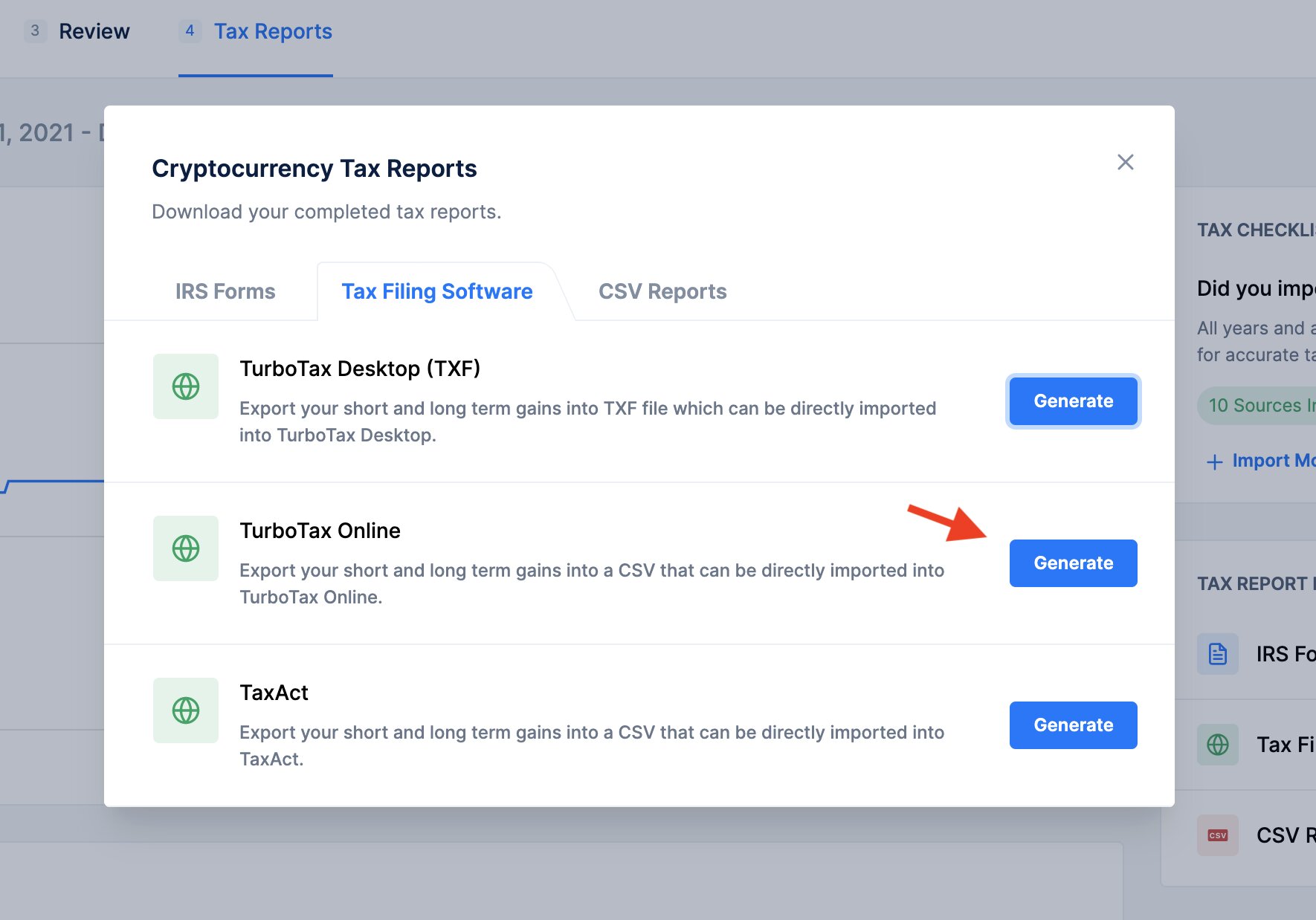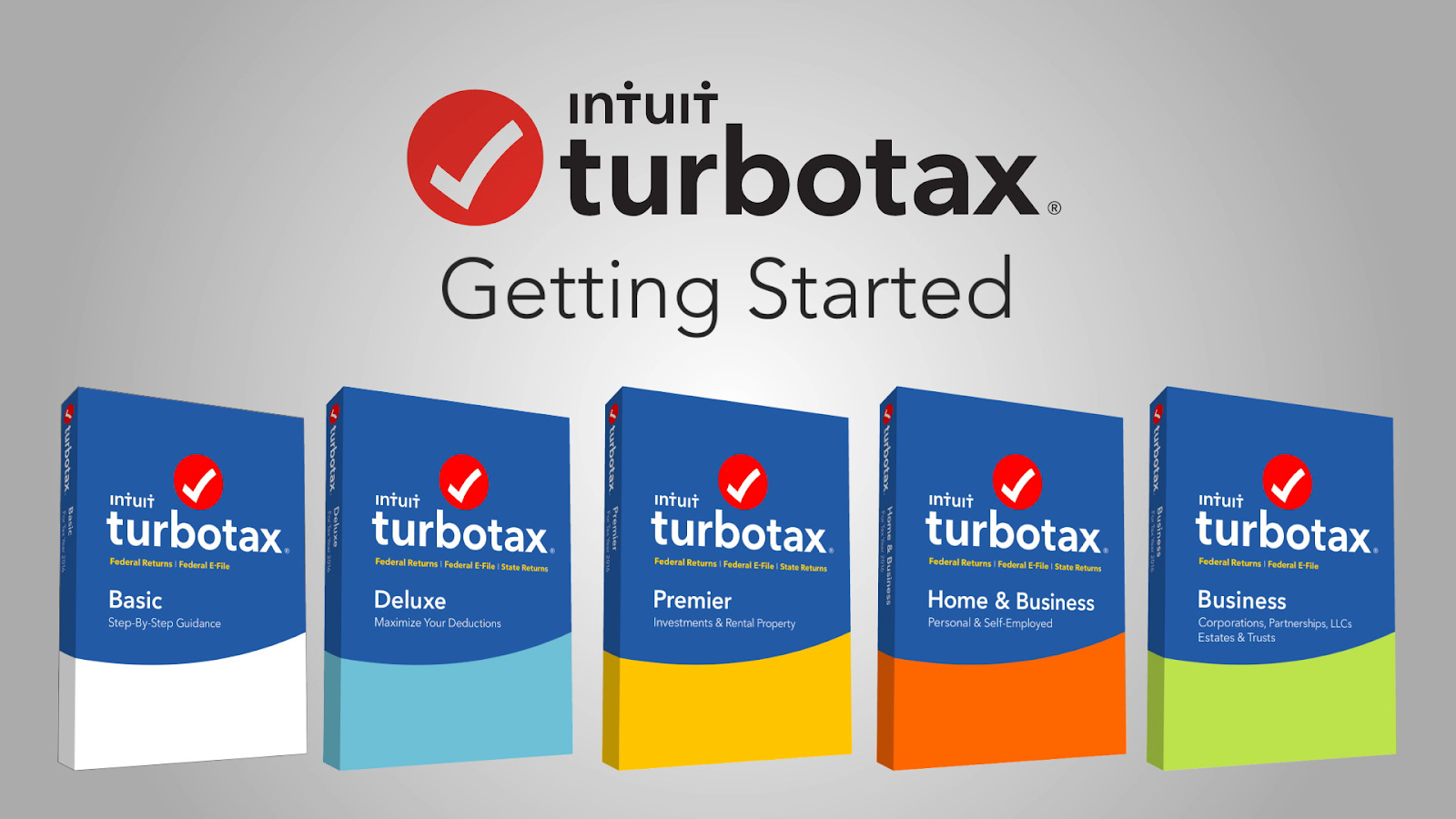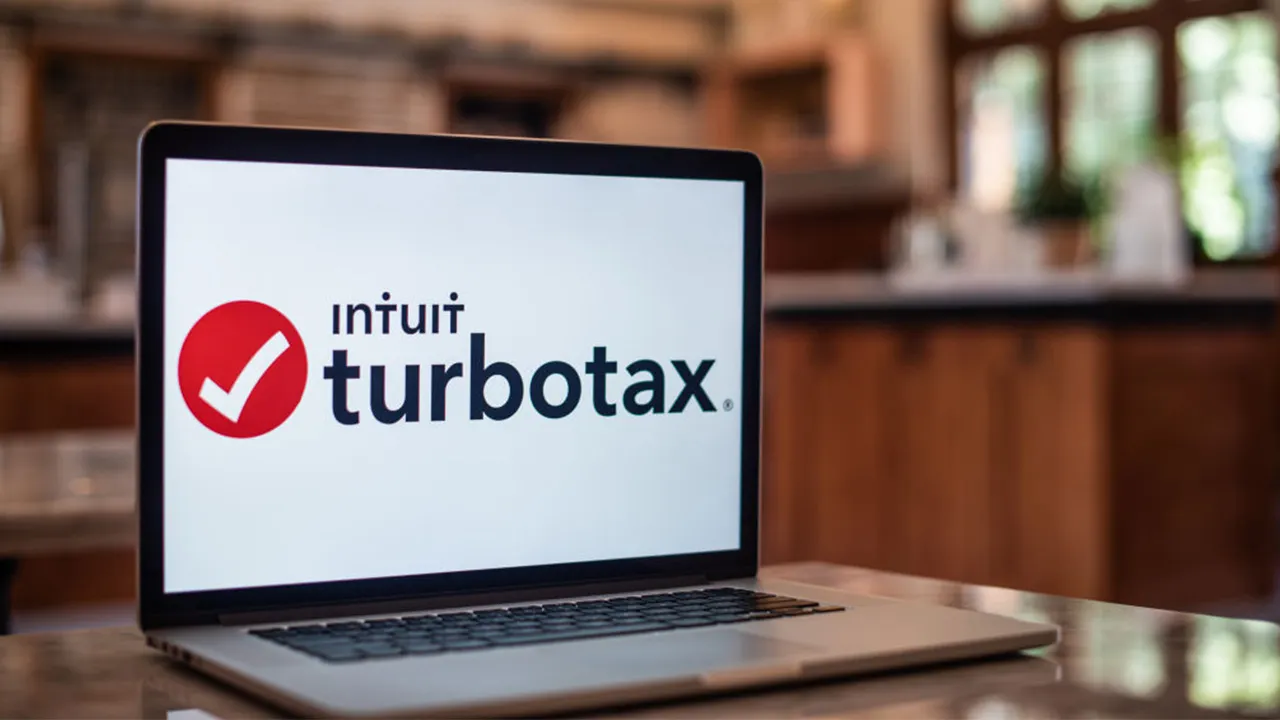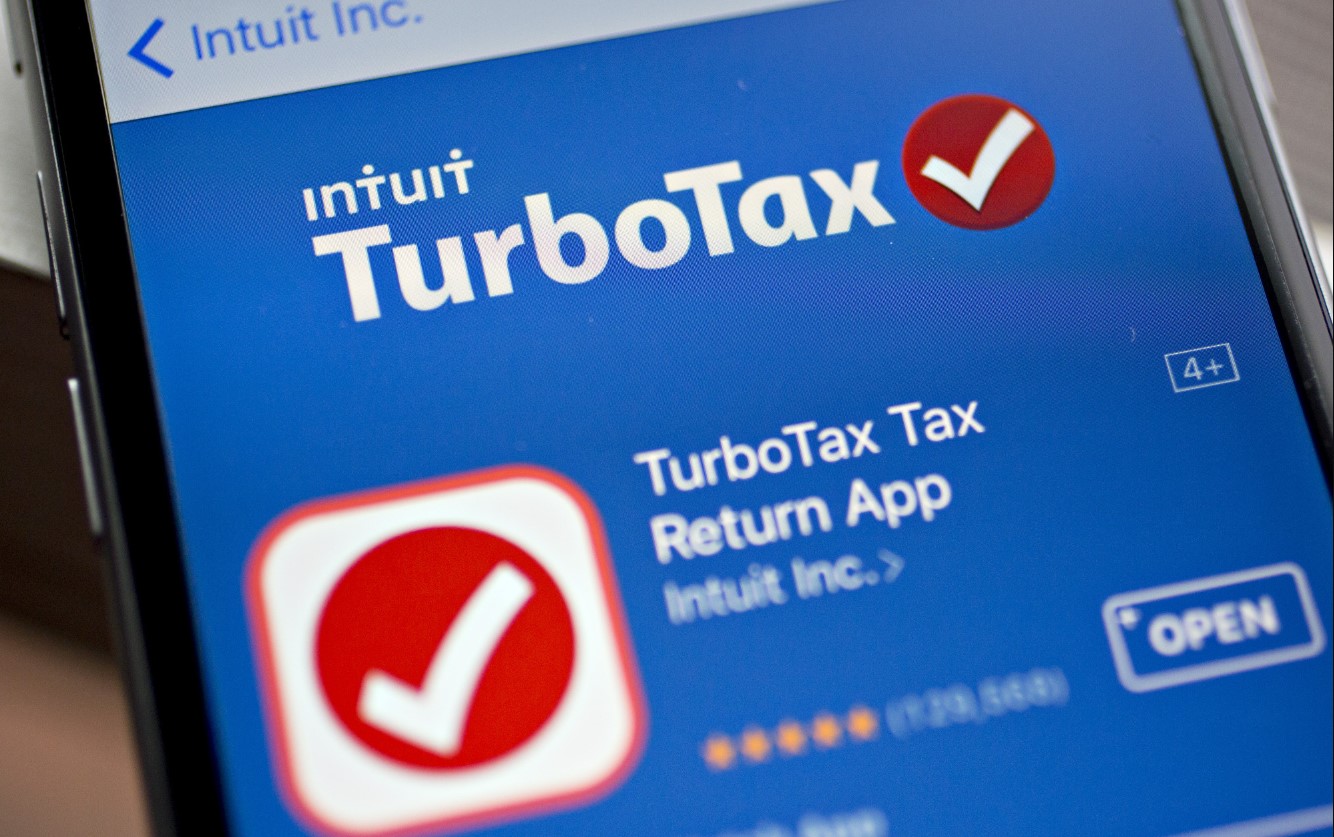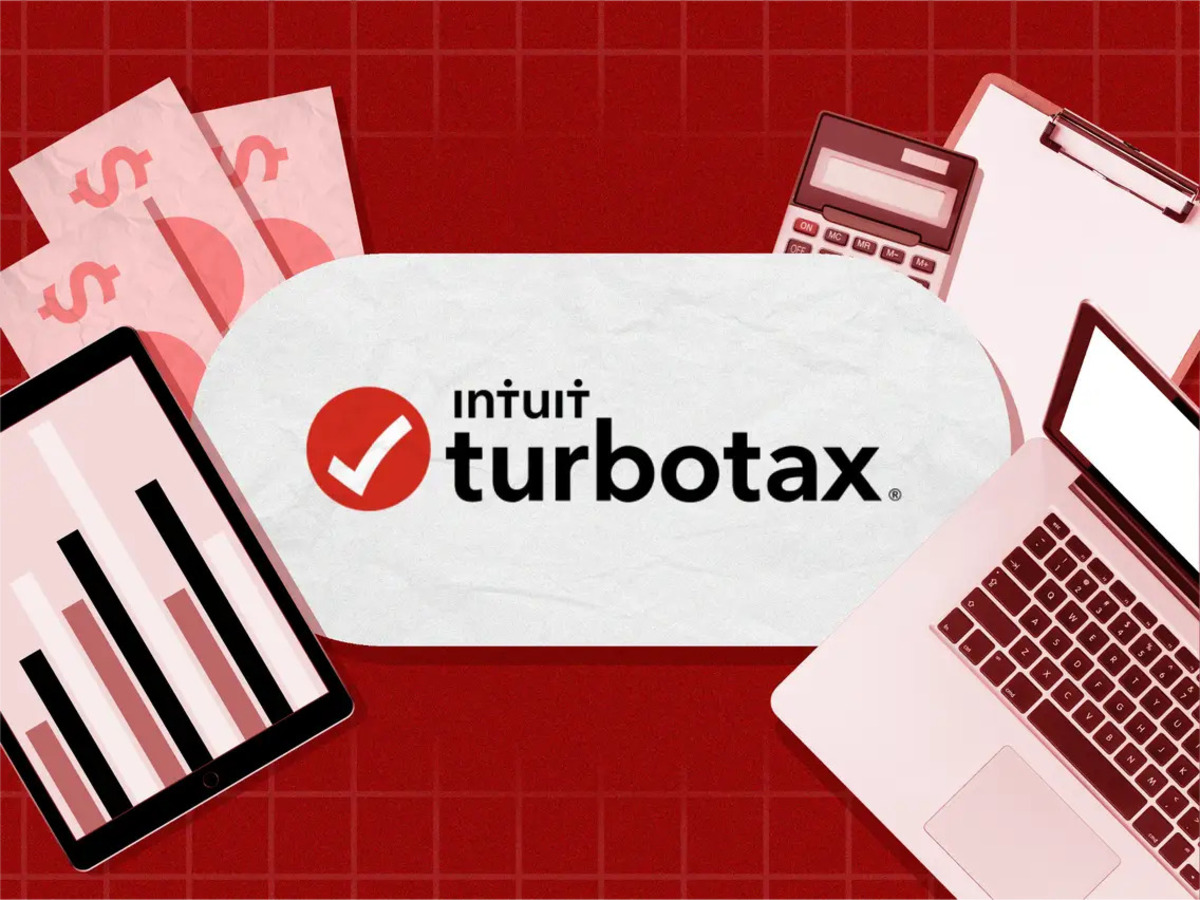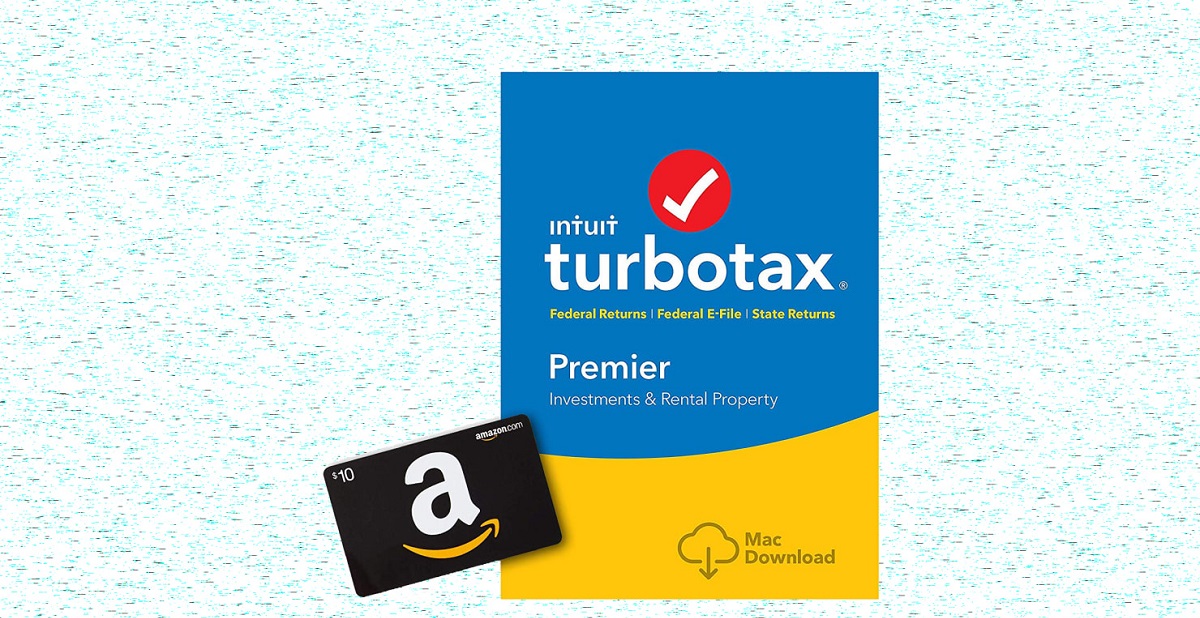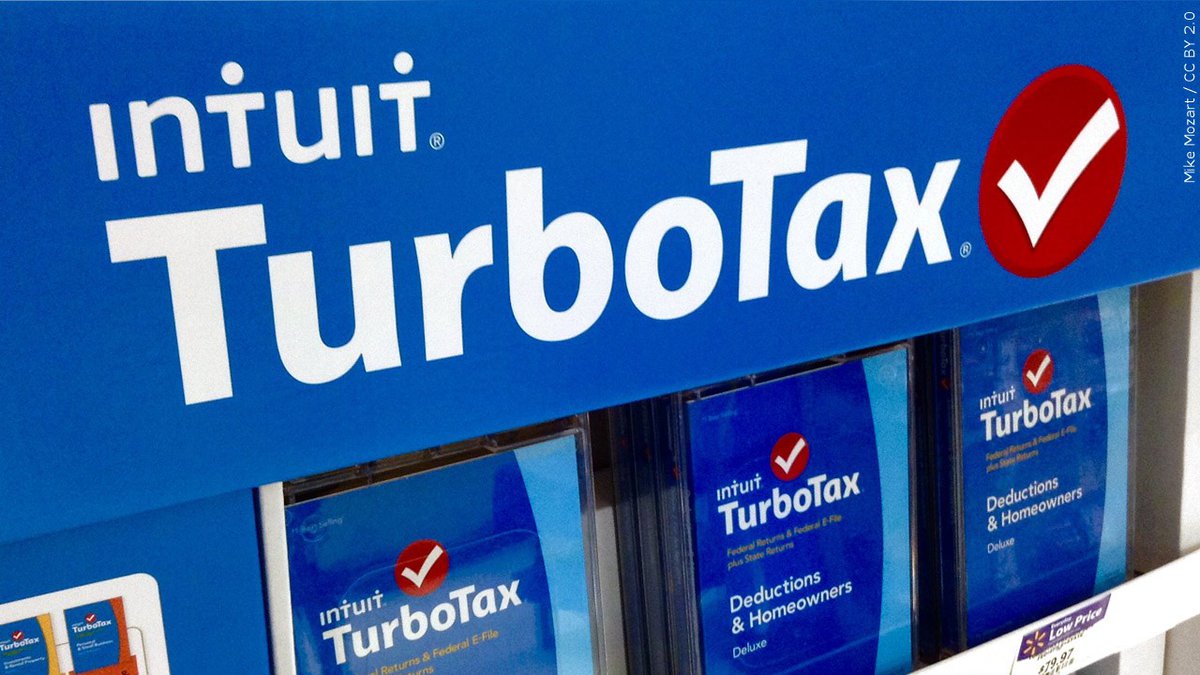Introduction
Welcome to the world of cryptocurrencies, where digital assets such as Bitcoin, Ethereum, and Litecoin have taken the financial world by storm. As an investor or trader in cryptocurrencies, it’s important to understand that you may have certain tax obligations. Just like any other form of investment or income, cryptocurrency profits are subject to taxation.
In this article, we will guide you through the process of doing your crypto taxes on TurboTax. TurboTax is a popular tax preparation software that simplifies the process of filing taxes for individuals and businesses. By following these steps, you can ensure that your cryptocurrency transactions are accurately reported, reducing the risk of penalties and audits from the tax authorities.
Before we dive into the steps of using TurboTax for your crypto taxes, it’s crucial to have a basic understanding of the tax implications of cryptocurrency transactions. Generally, the Internal Revenue Service (IRS) treats cryptocurrencies as property, meaning that the various tax rules that apply to property transactions also apply to cryptocurrency transactions.
In simple terms, this means that when you sell, trade, or exchange cryptocurrencies, it can trigger taxable events. Taxable events include selling your cryptocurrencies for fiat currency (such as USD), trading one cryptocurrency for another, receiving cryptocurrency as income, or using cryptocurrency to make purchases. Each of these transactions may have a tax consequence that needs to be reported on your tax return.
It’s worth noting that while the IRS considers cryptocurrencies as property, they do not recognize them as legal tender. Therefore, cryptocurrencies are not classified as foreign currency, and the rules for foreign currency transactions do not apply.
Now that you have a basic understanding of the tax implications of cryptocurrencies and the role of TurboTax in the tax preparation process, let’s dive into the steps you need to follow to effectively report your cryptocurrency transactions on TurboTax.
Step 1: Understanding the Basics of Crypto Taxes
Before you begin the process of filing your crypto taxes on TurboTax, it’s essential to have a solid grasp of the basics of crypto taxes. In this step, we will cover some key concepts that will help you navigate the tax requirements related to your cryptocurrency investments.
First and foremost, it’s important to remember that the IRS considers cryptocurrencies as property for tax purposes. This means that they are treated similarly to stocks, bonds, or real estate. Any gains or losses made from cryptocurrency transactions are subject to capital gains tax.
There are two types of capital gains: short-term and long-term. If you hold your cryptocurrency for less than a year before selling or exchanging it, any profit will be considered short-term capital gains, which are typically taxed at your regular income tax rate. On the other hand, if you hold your cryptocurrency for more than a year, any profit will be classified as long-term capital gains, which often have a lower tax rate.
It’s important to keep detailed records of your cryptocurrency transactions, including the purchase price, date of acquisition, and the fair market value at the time of the transaction. These records will be crucial when calculating your capital gains or losses for tax reporting purposes.
Additionally, it’s important to note that certain actions, such as mining or receiving cryptocurrency as income, may be subject to self-employment taxes. If you mine cryptocurrencies or receive them as payment for goods or services, you will need to report the fair market value of the coins as income on your tax return. This income will be subject to both income tax and self-employment tax.
Lastly, it’s important to understand your reporting obligations for foreign cryptocurrency exchanges. If you use foreign exchanges to buy or sell cryptocurrencies, you may need to report these transactions on your tax return. The IRS requires U.S. taxpayers to report any offshore financial accounts with an aggregate value of $10,000 or more at any time during the year.
By familiarizing yourself with these fundamental concepts of crypto taxes, you’ll be better prepared to navigate the tax reporting process on TurboTax. Now that you have a solid understanding of the basics of crypto taxes, let’s move on to the next step: gathering all the necessary documentation.
Step 2: Gathering all Necessary Documentation
Before you can start preparing your crypto taxes on TurboTax, it’s crucial to gather all the necessary documentation related to your cryptocurrency transactions. Having accurate and organized documentation will help ensure that you report your transactions correctly and minimize the risk of errors or audits.
Here are some essential documents and information that you should gather:
- Transaction history: Collect a comprehensive record of all your cryptocurrency transactions, including purchases, sales, trades, and any other transactions related to cryptocurrencies. This can usually be obtained from the exchanges or platforms you have used for trading.
- Receipts and invoices: If you have used cryptocurrencies to make purchases or received them as payment for goods or services, gather any receipts or invoices that document these transactions. This includes dates, descriptions, and the fair market value of the cryptocurrencies used.
- Coinbase or wallet statements: If you’ve used Coinbase or other cryptocurrency wallets, download your account statements to track your cryptocurrency holdings and transactions. These statements will provide a detailed overview of your cryptocurrency activity.
- Valuation data: It’s important to determine the fair market value of your cryptocurrencies at the time of each transaction. Various websites and platforms provide historical cryptocurrency price data, which can be used to calculate gains or losses.
- Records of mining income: If you have mined cryptocurrencies, keep track of the income you received from mining, including the fair market value of the coins at the time of receipt.
- Foreign exchange records (if applicable): If you have used foreign cryptocurrency exchanges, gather the necessary records of these transactions. This includes documentation of purchases, sales, trades, and any other relevant information.
- Previous tax returns: Review your previous tax returns to ensure that you have accurately reported any cryptocurrency activity in previous years. This is important to maintain consistency and avoid discrepancies in your reporting.
By gathering all the necessary documentation and information related to your cryptocurrency transactions, you’ll be well-prepared to accurately report your crypto taxes on TurboTax. In the next step, we will guide you through the process of creating an account on TurboTax.
Step 3: Creating an Account on TurboTax
Now that you have gathered all the necessary documentation, it’s time to create an account on TurboTax. TurboTax is a user-friendly tax preparation software that will guide you through the process of accurately reporting your crypto taxes.
Here’s how you can create an account on TurboTax:
- Go to the TurboTax website: Open your web browser and navigate to the TurboTax website. You can easily find it by searching for “TurboTax” in your preferred search engine.
- Choose the right product: TurboTax offers different products depending on your tax filing needs. Select the product that suits your requirements. For most individuals, the “TurboTax Online” option is suitable.
- Create an account: Click on the “Create an account” or “Sign up” button to register a new account. The process will typically involve entering your email address, creating a password, and agreeing to the terms of service.
- Provide your personal information: Once your account is created, you will be prompted to enter your personal information. This includes your name, address, social security number or taxpayer identification number, and any other required details.
- Choose the correct filing status: TurboTax will ask you about your filing status, such as single, married, head of household, or qualified widow/widower. Select the option that applies to your situation.
- Secure your account: Set up security measures such as additional authentication steps or a strong password to protect your TurboTax account.
Once you have successfully created your TurboTax account, you’ll be ready to start the process of reporting your cryptocurrency transactions. In the next step, we will guide you through the process of selecting the correct tax form on TurboTax.
Step 4: Selecting the Correct Tax Form
After creating your account on TurboTax, the next step is to select the correct tax form that corresponds to your tax situation and cryptocurrency transactions. TurboTax will guide you through this process, ensuring that you choose the appropriate form for accurate tax reporting.
Here’s how you can select the correct tax form on TurboTax:
- Login to your TurboTax account: Visit the TurboTax website and log in using your account credentials.
- Start a new tax return: If you haven’t already started a new tax return, TurboTax will prompt you to begin a new one. Select the option to start a new return.
- Answer the necessary questions: TurboTax will guide you through a series of questions to determine your tax situation. Answer each question accurately and honestly to ensure proper tax filing.
- Enter your personal information: Provide TurboTax with your personal information, including your name, social security number, and any other required details.
- Select the correct filing status: Choose the filing status that applies to you, such as single, married filing jointly, head of household, or another applicable status.
- Indicate that you have cryptocurrency transactions: TurboTax will ask if you had any cryptocurrency transactions during the tax year. Select the option to indicate that you have engaged in cryptocurrency transactions.
- Choose the correct tax form: Based on your answers and the information you provide, TurboTax will determine the appropriate tax form for your situation. Select the recommended tax form to proceed.
It’s important to select the correct tax form that matches your tax situation and cryptocurrency transactions. Choosing the wrong tax form may result in inaccurate tax reporting and potential issues with the IRS. If you’re unsure about which tax form to select, consider consulting a tax professional or utilize TurboTax’s customer support for guidance.
Now that you have selected the correct tax form on TurboTax, it’s time to move on to the next step: entering your personal information.
Step 5: Entering Personal Information
After selecting the correct tax form on TurboTax, it’s time to enter your personal information. This step is vital for accurate tax reporting and ensuring that your tax return is processed correctly by the IRS.
Follow these steps to enter your personal information on TurboTax:
- Review your basic information: TurboTax will display your basic information, such as your name, address, and social security number. Verify that all the details are correct and up-to-date. If any changes are necessary, you can make the edits accordingly.
- Provide information about your dependents: If you have any dependents, such as children or other family members, TurboTax will prompt you to enter their information, including their names, social security numbers, and relationship to you. This information is necessary for tax credits and deductions.
- Include information about your income sources: TurboTax will ask you to provide information about your income sources. This may include W-2 forms for employment income, 1099 forms for self-employment income, and any other relevant income documentation. Be sure to enter all the income sources accurately to avoid any discrepancies.
- Provide details about your cryptocurrency transactions: TurboTax will prompt you to enter the specifics of your cryptocurrency transactions. This includes the date, type, and amount of each transaction. Refer to the documentation you gathered in the previous steps to ensure accurate reporting.
- Answer additional questions: TurboTax may ask you additional questions related to your tax situation, such as deductions, credits, or other factors that could impact your tax liability. Answer these questions truthfully and provide any necessary information to ensure comprehensive tax reporting.
- Double-check your information: Before proceeding, take the time to review all the information you entered. Ensure that it is accurate and complete. Mistakes or omissions could lead to errors in your tax return.
By carefully entering your personal information on TurboTax, you will take a significant step towards accurately reporting your cryptocurrency transactions and ensuring compliance with the IRS. In the next step, we will delve into the process of reporting your crypto income.
Step 6: Reporting Crypto Income
Once you have entered your personal information on TurboTax, it’s time to report your crypto income. This step is crucial for accurately calculating your tax liability and ensuring compliance with the IRS regulations.
Follow these steps to report your crypto income on TurboTax:
- Select the appropriate section: TurboTax will provide sections for different types of income. Look for the section that pertains to cryptocurrency or investment income. It may be labeled as “Investment Income” or “Other Income” on TurboTax.
- Enter your crypto income: TurboTax will prompt you to enter the details of your crypto income. This includes the amounts you received from mining, crypto rewards, airdrops, or any other means of earning crypto income. Enter the information accurately based on your documentation.
- Specify the type of income: TurboTax may ask you to classify your crypto income as either ordinary income or capital gains, depending on the nature of the income. Follow the instructions provided by TurboTax and select the appropriate category.
- Calculate gains and losses: If you sold or exchanged your cryptocurrencies during the tax year, TurboTax will guide you through calculating capital gains or losses. You may need to provide information about the purchase price, date of acquisition, and fair market value at the time of the transaction. TurboTax will automatically calculate your gains or losses based on this data.
- Review your figures: Before proceeding, carefully review the figures TurboTax has calculated for your crypto income. Make sure the numbers align with your records and accurately reflect your cryptocurrency activity.
By reporting your crypto income accurately on TurboTax, you will fulfill your tax obligations and demonstrate compliance with the IRS regulations. It’s essential to keep proper documentation of your cryptocurrency transactions and refer to it when reporting your income to ensure accuracy.
Now that you have reported your crypto income, let’s move on to the next step: reporting crypto losses.
Step 7: Reporting Crypto Losses
Reporting crypto losses is an important step in accurately calculating your tax liability and potentially offsetting your taxable income. If you experienced losses from your cryptocurrency investments during the tax year, you can report these losses on TurboTax to potentially reduce your overall tax liability.
Here’s how you can report crypto losses on TurboTax:
- Select the appropriate section: Look for the section on TurboTax that deals with capital gains and losses. It may be labeled as “Investment Income” or “Capital Gains and Losses.”
- Enter your crypto losses: TurboTax will prompt you to enter the details of your crypto losses. Provide accurate information about the amounts and dates of the loss transactions.
- Calculate the losses: TurboTax will guide you through calculating your capital losses based on the details you entered. It may ask for information such as the purchase price, date of acquisition, and fair market value at the time of the loss. TurboTax will automatically calculate the losses based on this information.
- Review your figures: Before finalizing the entry of your crypto losses, review the figures TurboTax has calculated. Ensure that the numbers are accurate and align with your documentation and records.
Reporting crypto losses can potentially offset your capital gains and reduce your tax liability. If your losses exceed your gains, you may even be eligible to carry those losses forward to future tax years to offset any future gains.
It’s important to note that there are specific rules and limitations when it comes to reporting crypto losses. The IRS has regulations regarding the classification of losses as long-term or short-term, as well as limitations on the amount of losses that can be deducted in a given tax year. It’s recommended to consult a tax professional or reference the IRS guidelines to ensure compliance and maximize the benefits of reporting your crypto losses.
Now that you have reported your crypto losses, let’s move on to the next step: addressing crypto airdrops and forks.
Step 8: Addressing Crypto Airdrops and Forks
Crypto airdrops and forks can introduce complexities when it comes to tax reporting. If you have received cryptocurrencies through airdrops or as a result of blockchain forks, it’s important to address these events correctly on TurboTax to ensure accurate tax reporting.
Follow these steps to address crypto airdrops and forks on TurboTax:
- Understand the nature of airdrops and forks: Familiarize yourself with the concept of airdrops and forks and how they can impact your tax obligations. Airdrops involve the distribution of free cryptocurrency tokens to existing cryptocurrency holders, while forks occur when a blockchain splits into two separate chains, resulting in new cryptocurrencies.
- Decide how to handle airdrops: Determine if you received any airdropped tokens during the tax year. If so, consult the IRS guidelines to determine if these tokens should be treated as taxable income. In some cases, you may need to report them as ordinary income based on their fair market value at the time of receipt.
- Address forks: If you experienced a blockchain fork and received new cryptocurrencies as a result, determine their fair market value at the time of the fork. Calculate any potential gains or losses if you decide to sell or dispose of these forked coins.
- Report airdrops and forked coins: TurboTax will provide sections to report airdrops and forked coins. Enter the necessary information, such as the number of tokens received, fair market value, and any associated gains or losses.
- Review your information: Double-check the information you entered regarding airdrops and forks to ensure accuracy. Make sure it aligns with your records and follows the IRS guidelines.
Addressing crypto airdrops and forks correctly on TurboTax is crucial for accurate tax reporting. Failure to report these events or incorrectly reporting them could result in audit triggers or penalties from the IRS. Consult the IRS guidelines or seek assistance from a tax professional if you are unsure about how to report airdrops and forks.
Now that you have addressed airdrops and forks, let’s move on to the next step: filing the tax return.
Step 9: Filing the Tax Return
After accurately reporting your cryptocurrency transactions and addressing any special circumstances such as airdrops and forks, you are ready to file your tax return using TurboTax. Filing your tax return is the final step in the process and allows you to officially submit your tax information to the IRS.
Follow these steps to file your tax return on TurboTax:
- Review your entire tax return: Before filing, carefully review your entire tax return to ensure that all the information is accurate and complete. Double-check the figures, deductions, and any other relevant details.
- Verify your payment and refund options: TurboTax will ask you to provide your payment details if you owe taxes. Alternatively, if you’re due a refund, you can choose to have it deposited directly into your bank account. Verify these options and make any necessary arrangements.
- E-file your tax return: TurboTax allows you to electronically file your tax return directly with the IRS. Follow the instructions provided by TurboTax to securely transmit your tax information to the IRS.
- Pay any taxes owed: If you owe taxes, make your payment by the appropriate deadline. TurboTax will provide you with the necessary information and payment options to fulfill your tax obligations.
Filing your tax return electronically using TurboTax offers several benefits, including quicker processing, faster refunds (if applicable), and reduced risk of errors. Additionally, e-filing allows you to receive confirmation that the IRS has received your tax return.
After you have successfully filed your tax return, TurboTax will provide you with a confirmation receipt. Keep this receipt for your records, along with all the documentation related to your cryptocurrency transactions. These documents will be important in the event of an audit or if you need to reference your tax information in the future.
Now that you have filed your tax return, let’s move on to the final step: reviewing and submitting the tax return.
Step 10: Reviewing and Submitting the Tax Return
The final step in the process of doing your crypto taxes on TurboTax is to review and submit your tax return. It’s crucial to carefully review your tax return to ensure accuracy and completeness before submitting it to the IRS.
Follow these steps to review and submit your tax return on TurboTax:
- Review the entire tax return: Carefully review every section of your tax return to ensure that all the information is accurate and up to date. Check that your personal information, income details, deductions, and any specific cryptocurrency-related information are all correct.
- Double-check figures and calculations: Verify all the figures and calculations on your tax return to ensure accurate reporting. Pay close attention to any capital gains or losses related to your cryptocurrency transactions.
- Check for errors or omissions: Look for any errors or omissions on your tax return. Check that you haven’t missed reporting any cryptocurrency transactions or failed to include any necessary documentation.
- Resolve any outstanding issues: If TurboTax identifies any potential issues or flags on your tax return, address them promptly. Resolve any discrepancies or inconsistencies before submitting your tax return.
- Submit your tax return: Once you’ve thoroughly reviewed your tax return and resolved any outstanding issues, you can submit it to the IRS through TurboTax. Follow the instructions provided by TurboTax to securely transmit your tax information.
- Keep a copy of your tax return: After submitting your tax return, make sure to save a copy for your records. You can download a PDF version of your tax return for your files. Additionally, keep all the documentation related to your cryptocurrency transactions for future reference.
Reviewing and submitting your tax return is a critical step in the process of doing your crypto taxes. Taking the time to carefully review your tax return helps minimize the risk of errors, ensures accurate reporting, and provides peace of mind knowing that you have fulfilled your tax obligations.
By completing this final step, you have successfully completed the process of doing your crypto taxes on TurboTax. Congratulations on your diligent effort in accurately reporting your cryptocurrency transactions and complying with IRS regulations!
Conclusion
Congratulations! You have successfully navigated the process of doing your crypto taxes on TurboTax. By following the steps outlined in this guide, you have accurately reported your cryptocurrency transactions and fulfilled your tax obligations.
Understanding the basics of crypto taxes, gathering all necessary documentation, creating an account on TurboTax, selecting the correct tax form, entering personal information, reporting crypto income, addressing crypto losses, handling airdrops and forks, filing the tax return, and reviewing and submitting your tax return are all essential steps in the process.
By utilizing TurboTax, a user-friendly tax preparation software, you have streamlined the tax filing process and minimized the risk of errors or omissions. TurboTax’s guidance, prompts, and calculations have ensured accurate reporting and compliance with the IRS regulations.
Remember to keep a copy of your tax return, along with all the documentation related to your cryptocurrency transactions, for future reference and in the event of an audit. By maintaining organized records, you can help simplify the process of future tax filings and ensure consistency in your reporting.
If you have more complex crypto tax situations or require additional guidance, it’s advisable to consult a tax professional who specializes in cryptocurrency taxation. They can provide personalized advice and insights tailored to your specific needs.
Doing your crypto taxes can be a complex task, but with the right knowledge and tools, such as TurboTax, it becomes more manageable. Take the time to understand the tax implications of your cryptocurrency investments and stay informed about any updates or changes to tax regulations.
Remember, accurate tax reporting is not only a legal requirement but also ensures that you contribute your fair share to society. By fulfilling your tax obligations, you contribute to the functioning of government institutions, infrastructure, and public services that benefit us all.
Thank you for taking the time to learn about doing your crypto taxes on TurboTax. We hope this guide has provided valuable insights and guidance throughout the process. Good luck with your future tax filings, and may your cryptocurrency investments continue to flourish!







